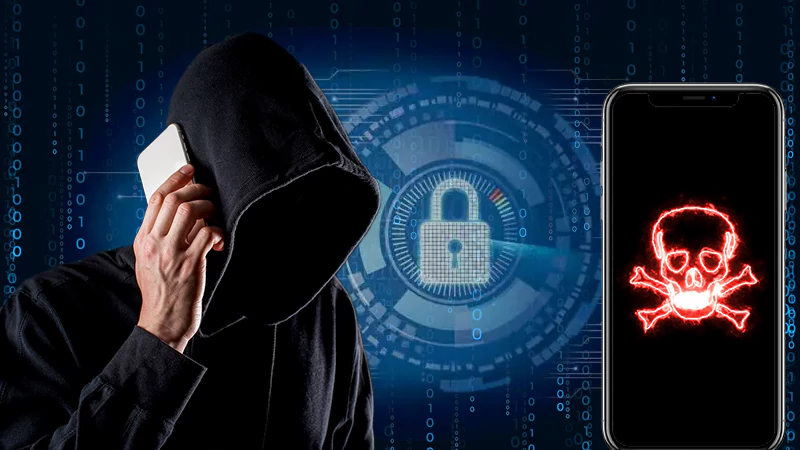Mobile applications have become a popular and important tool in our technological world. From messaging to music to games – mobile apps can do it all. Adding so many functions to our mobile devices with the help of an array of apps has made our lives so easy but, at the same time, has made devices more vulnerable to hackers. To protect themselves from these risks, mobile app developers should exercise caution when releasing their apps onto the market.
With so many different apps available in the market, each one putting your device at an added risk with its vulnerabilities, it’s no wonder why code signing certificates are such an important factor in mobile application security. According to Digital Signature Market Report 2020, the code signing market is expected to grow from USD 2.8 billion in 2020 to USD 14.1 billion by 2026, at a Compound Annual Growth Rate (CAGR) of 31.0% during the forecast period.
Also Read: How Can I Buy UPC Code for My Merchandise
So, now that we have seen how the world over Digital Signature Market is expanding, we know why mobile application developers are obligated to keep their code signing certificate up-to-date with the latest security protocols. This ensures that both you, as an app user, and your personal data are protected from potential harm.
This blog post will explore these certificates and look at some of their practical applications in making applications more secure and safe for users.
Understanding Code Signing Certificates
A Code Signing Certificate is a digital certificate for software that indicates its developer and guarantees that the software has not been modified after it was signed by the certificate. The most important characteristic of a Code-Signing Certificate is its ability to guarantee authenticity.
The code signing certificate is that very crucial factor that ensures mobile application security. The certificate proves that the app is authentic since malicious apps would not be able to pass the certificate’s verification process. With a code signing certificate, your mobile application can be publicly trusted to be safe and secure.
What are the Benefits Of Code Signing Certificates for Mobile Applications?
- Code signing certificates can provide a myriad of advantages to your business.
- It attaches the developer’s digital signature to the application before it is released on the market. This authenticates the real publisher of the application to the user.
- Code Signing Certificates help to Secure the Mobile Application against any tampering.
- Code Signing Certificates Provide Protection Against Hacking and Malware.
- When someone downloads an app from an unknown source, they could download malware or other malicious content; this could end up hacking into their device. The code signing certificate ensures that this does not happen when you download an app from the Play Store or Apple Store. It also prevents malware from spreading to infected devices.
- It lets the user know that the app is authentic and has not been tampered with since it was last signed.
- Lets you get rid of warning messages triggered by Windows, “Unknown Publisher Warning”.
- With the code signing certificate, people will be able to trust that your mobile app is safe to use.
- The developers get the convenience of signing any future updates for the applications with the same key as the original signed application. This helps the publisher to get the same trust associated with updates by the users.
- The trust factor built with the users helps to improve your reputation as an application developer in the market.
- The signing of your application wins its place in the Google play store and App store, as they do not allow any mobile application to be featured on their platforms without being digitally signed with the help of a Code Signing Certificate.
- Improved reputation helps to generate revenue for your business by increasing the number of downloads for your application.
How Does Code Signing Certificate Work?
A code signing certificate works using public-key cryptography or asymmetric encryption technology. Public-key cryptography uses a pair of keys, one private, another public. Only the person who owns the private key can decrypt content that is encrypted using the public key. The code signing certificate is part of the authentication process, verifying that you are its rightful owner.
Let us now try to go through major steps that are involved in protecting your application with the Code Signing Certificate:
- Based on your requirements, you can buy a Code Signing Certificate from a reputed Certificate Authority(CA) for your application.
- The CA will then work on a vigorous verification process to establish the authenticity of your company or an individual developer.
- After completing the verification process, the CA issues the signing certificate to you.
- Now, the actual procedure of attaching the digital signature with the application takes place. This procedure is carried out by hashing the application code, which is then encrypted using the private key that the developer usually generates.
- It is always advisable to time stamp your mobile application to keep your digital signature valid even after your code signing certificate expires. Time stamping enables the users to see that the application was signed when the code signing certificate was still valid.
- The hash generated in the above procedure is packed with the signing certificate with the public key and the developer’s code. After this, you can go ahead with the distribution of the application, which is code signed for users.
- When a signed application is downloaded onto the user’s system, it uses a public key in the signing certificate to decrypt the hash. The hash so generated is compared to the hash value generated by the application that is downloaded for the same value, which then confirms the authenticity of the downloaded application.
Which Kind of Code Signing Certificate Should You Apply for?
When it comes to code signing certificates, there are two types: Standard Code Signing Certificates and EV code signing certificates. The difference lies in the level of trust these provide.
Applications using the standard code signing certificates still display the Microsoft Smart Screen warnings until they build a good reputation and increase their reliability and trust among users till it reports higher downloads. EV Code Signing Certificates does not display Windows ‘Unknown Publisher warnings”, as it is issued after following an elaborate verification procedure for the publishers. You can choose the signing certificates for your application according to your budget and specific requirements.
In conclusion, Code Signing Certificates are a very important aspect of mobile application security. It is important to educate your team about adding a code signing certificate and other mobile app security measures. As a developer, you should never compromise on the security of your mobile application. You should always take the necessary steps to protect your data and prevent hackers from taking control of it. The code signing certificate is one such step that you can take to ensure that your app is 100% safe for use.
















